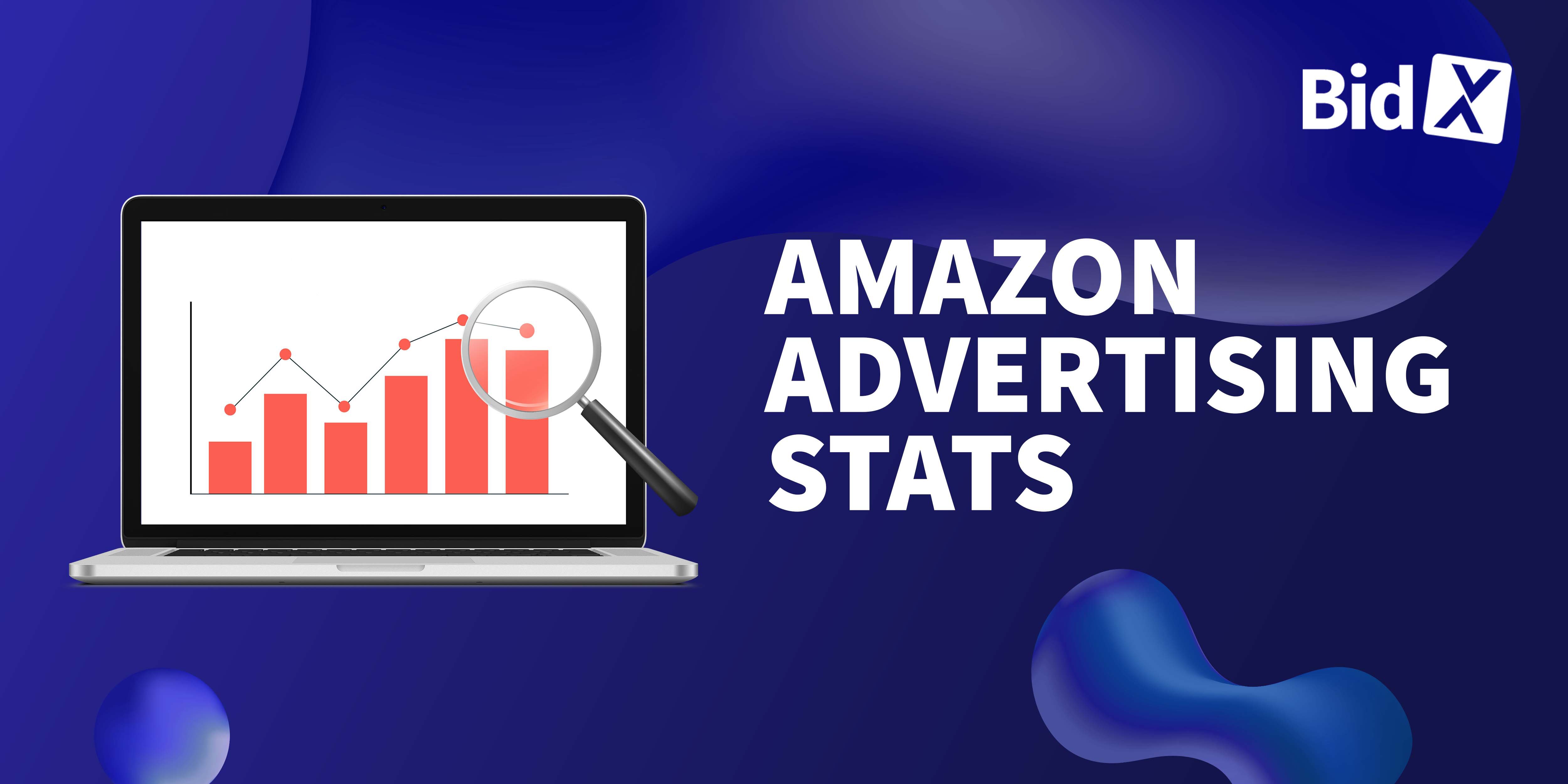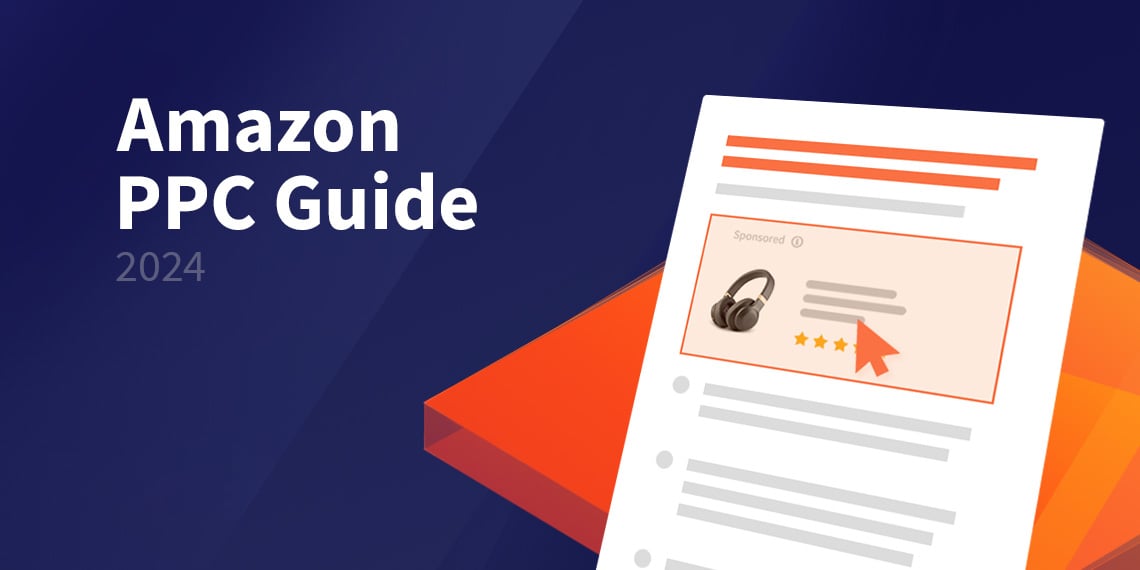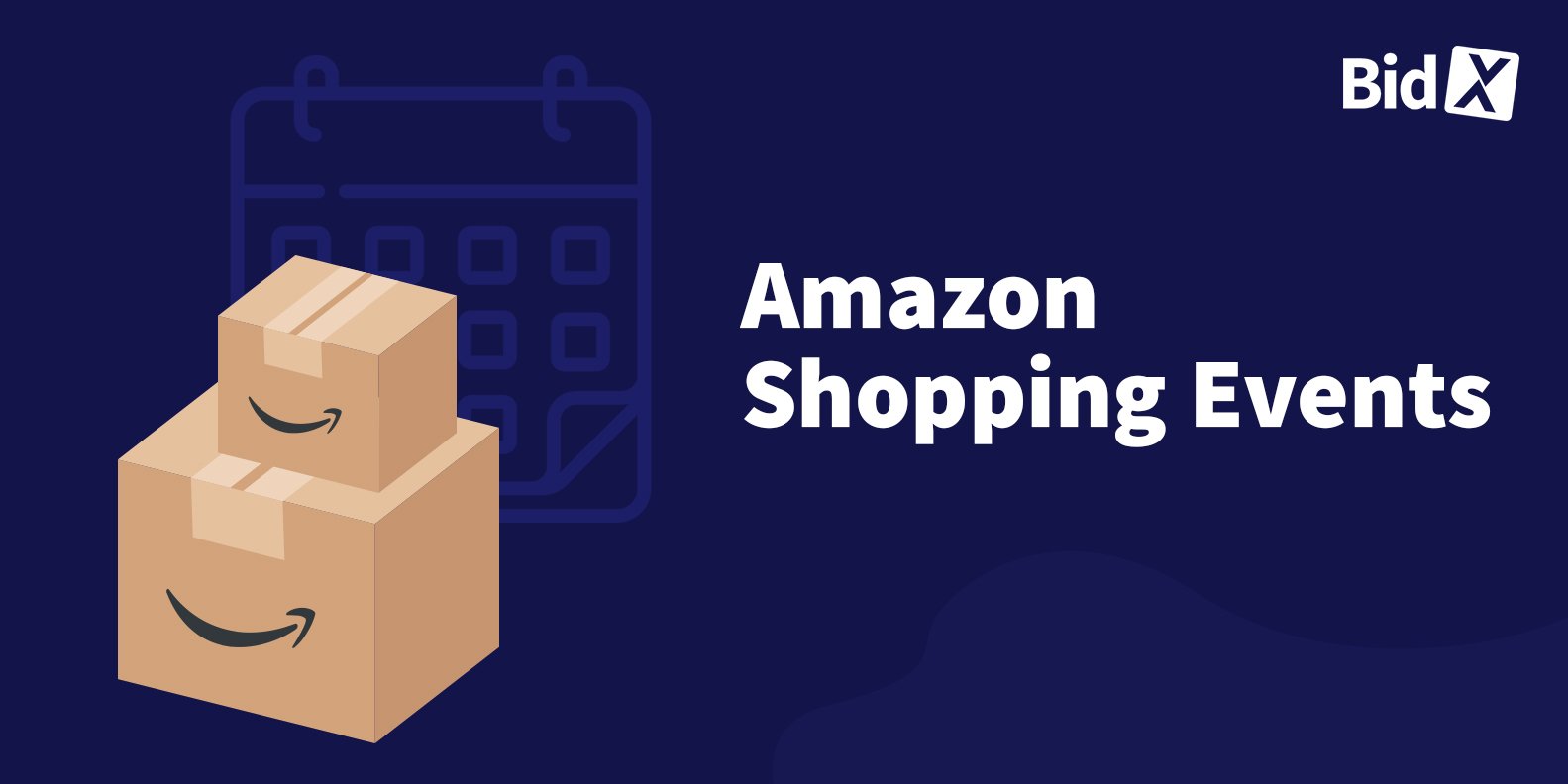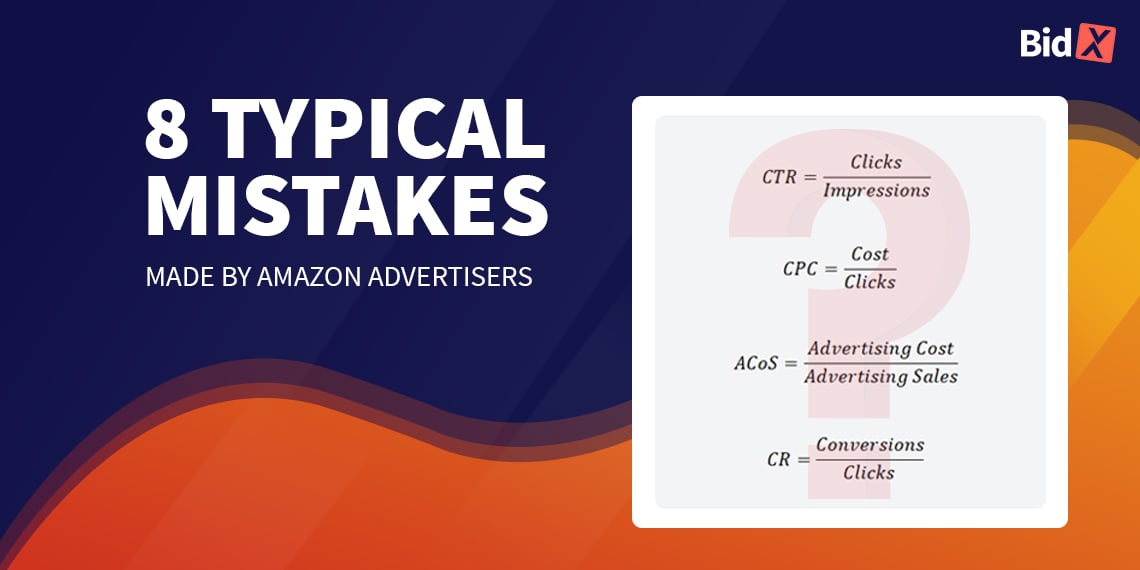Amazon Advertising Statistics
Have you ever wondered how your campaigns compare to other advertisers on Amazon? Or are you curious about the key metrics that drive the success of your Amazon business?
Understanding Amazon Advertising statistics such as cost per click, conversion rates as well as the advertising cost to sales (ACOS) ratio can help you evaluate your performance and improve your strategy.
We draw on the AMX500 - the Amazon Market Index 500, which was developed by BidX and includes a variety of advertising metrics based on 500 anonymized, large and international merchants. This index provides a dynamic overview and adjusts according to the selected time frame to show a daily relative average performance. The data we present in this blog post relates to the year 2023 and therefore provides up-to-date insights into performance on Amazon.
It is important to note that this data provides a general overview, but can be heavily influenced by various factors such as customer search behavior and the available advertising budget. Especially when launching new products or seasonal trends, different strategies can play a role, which can have an impact on the key figures.
As absolute figures such as impressions and clicks are heavily dependent on variables such as search volume and Amazon's bidding system, their precise indication in a comparison is not meaningful. For this reason, we focus on values such as CTR, ACOS, CR and CPC, as these can be expressed as percentages and provide you with more precise insights into performance.
These averages serve as a guide and allow you to better understand and evaluate your own performance.
Who is the average Amazon seller?
The typical Amazon seller represents a diverse group of businesses that use the platform to offer their goods. These sellers come from a variety of backgrounds, including small businesses, start-ups and established online retailers. Their merchandise includes a wide range of products, from handmade items to established branded products. Within this diversity you will find individual entrepreneurs launching new products as well as international companies striving for global reach.
Here is an overview of the daily statistics of the average Amazon seller in 2023:
-(2).jpg?width=432&height=521&name=image_04(2)-(2).jpg)
What is the average click-through rate (CTR) on Amazon?
The average click-through rate (CTR) on Amazon can vary greatly depending on various factors such as product category, ad placement and seasonal trends. The average CTR for ads in the AMX500 in 2023 is 0.35%. It is important to note that these values can fluctuate greatly and an accurate CTR depends heavily on the product type and the quality of the ads.

What actually is the CTR?
The click-through rate (CTR) is a key figure in online marketing that indicates how often users have clicked on an ad, a link or a specific element, divided by the total number of times it has been displayed. For example, a CTR of 1% means that your ad receives one click for every 100 impressions. For Amazon ads, CTR refers to how many times a user clicks on an ad in relation to the total number of impressions of the ad.
How do I improve my CTR on Amazon?
A low CTR on Amazon indicates that potential buyers may not find your ad appealing enough to click on when searching for a product. This may mean that an optimization of your keyword strategy is necessary or that there are quality issues with your listing - sometimes it's both.
Measures to improve CTR:
- Optimize ad copy and images: Make sure your ads contain relevant and appealing images as well as meaningful, clear and compelling copy to pique the interest of potential buyers.
- Use relevant keywords: Use relevant keywords in your ads to ensure that they are displayed to the right target group and appeal to potential buyers.
- Ad placement customization: Although the exact placement of ads on Amazon is determined algorithmically, you can analyze the performance of different ad types such as Sponsored Brands, Sponsored Products and Sponsored Brands Video. By testing these different ad formats, you can gain insights into which ones are better aligned with the target audience to achieve a higher click-through rate.
- Run A/B tests: Test different versions of your ads to find out which elements work better. This could be different images, headlines or call-to-action texts.
- Optimization of product pages: Ensure that product pages are clearly structured, informative and appealing to improve the post-click conversion rate.
To increase CTR, continuous adjustments and testing are crucial to identify the most effective strategies and content that will pique the interest of potential buyers and motivate them to click on your ads.
What is the average cost per click (CPC) for advertising on Amazon?
The average cost per click (CPC) for advertising on Amazon can vary depending on the industry, product and competitors. In 2023, the average CPC value in the AMX500 is USD 0.76. The CPC is influenced by various factors, especially the level of competition. Higher competition leads to higher CPCs as you compete with other sellers for the best placement of your ad in front of searching customers.

What is CPC?
The CPC (Cost Per Click) is a metric that indicates the average cost for each click on an ad. For Amazon ads, CPC refers to the amount an advertiser pays each time a user clicks on their ad. The CPC can vary depending on keywords, competition and target audience.
Amazon PPC (Pay-Per-Click) works like an auction, so you only pay one cent more than the next highest bidder is willing to pay for this keyword.
For example: If you bid 2 USD and the next highest bid is 1.00 USD, your CPC is only 1.01 USD, even though the highest bid was 2 USD.
Monitoring and adjusting the CPC is important to maximize the profitability of ad spend and ensure effective ad placement.
What is the average conversion rate on Amazon?
The average conversion rate on Amazon can vary greatly depending on the product category and quality of the product page. In 2023, the average conversion rate in the AMX500 is 9.7%. It is important to note that factors such as product quality, price, product reviews and shipping options have a significant impact on the conversion rate.
-1.png?width=459&height=146&name=image%20(67)-1.png)
What is the conversion rate?
The conversion rate indicates how many visitors to a website or product page actually become buyers. On Amazon, the conversion rate refers to how many visitors actually buy the advertised product after being interested in the ad. A higher conversion rate indicates that more visitors are being persuaded to make a purchase, while a lower conversion rate indicates that fewer visitors are becoming customers.
The conversion rate is calculated as follows:

How can adjustments to the product listing on Amazon influence the conversion rate?
You can significantly influence the conversion rate on Amazon by making adjustments to the product listing. By taking the following measures, you can not only improve the quality of your listings, but also increase the likelihood that potential buyers will become actual customers after viewing your listings:
- Customize product descriptions: Revise product descriptions to highlight more relevant and engaging details that will pique the interest of potential buyers.
- Optimization of images: Appealing images are crucial. Make sure your product images are high quality and show different aspects of the product.
- Encourage customer reviews: Encourage your customers to leave reviews to build trust with potential buyers.
- Run A/B tests: Experiment with different ad elements such as text, images and call-to-action buttons to find out which work best.
- Take customer feedback into account: Take customer feedback seriously and use it to improve your offers and your ads.
These targeted optimizations of your product listings can increase the likelihood of potential buyers becoming actual customers by making your offerings more appealing and trustworthy.
Tips for optimizing your Amazon ads for a higher conversion rate
- Continuous monitoring and adjustment: Regularly monitor the performance of your ads and adjust them to improve results.
- Ad group segmentation: Group similar keywords and products into ad groups to create more specific and targeted ads.
- Use Sponsored Products, Sponsored Brands and Sponsored Display Ads: Use different types of Amazon ads to increase your visibility and target different audiences.
- Use negative keywords: Use negative keywords to deliver ads only for relevant search queries and minimize wastage.
- Regularly update ad texts and images: Test different ad copy and images to find out which combination works best to increase conversion rates.
By strategically designing and optimizing your Amazon ads, you can increase conversion rates and maximize the success of your sales campaigns on the platform.
How BidX helps you to improve your conversion rate
BidX makes the complexities of efficient Amazon advertising more accessible. With features such as Campaign Creator, Automation & Rules and personalized customer service, BidX enables up to 12 times faster campaign creation and improved cost control. BidX's highly personalized approach, based on AI-driven methods and custom rules, focuses on maximizing conversion rates. BidX also provides access to the entire Amazon advertising network, including Amazon DSP, to increase reach and enable more precise targeting of your audience. A comprehensive dashboard gives you precise insights into customer behavior and allows you to accurately analyze your marketing efforts to increase conversion rates. BidX also stands for high transparency so that you can understand and review the rules and decisions applied. With excellent customer support, BidX is at your side to help you optimize your ads. Using BidX enables merchants to effectively increase the conversion rate of their Amazon ads and maximize the success of their campaigns.
What are the average advertising costs in relation to sales (ACOS) on Amazon?
The average ACOS (Advertising Cost of Sales) on Amazon varies greatly depending on the industry, product and advertising strategy. In 2023, the average ACOS in the AMX500 is 19.9%, which means that for every revenue-generating advertising dollar, around 20 cents is spent on advertising costs. However, these values can fluctuate widely, and effective management of advertising campaigns can optimize ACoS and improve profitability.

What is ACOS?
The Advertising Cost of Sales (ACOS) is a key figure that measures the effectiveness of your advertising expenditure on Amazon. It shows the relationship between the cost of advertising and the sales generated. A low ACOS means that you are spending less on advertising to generate sales, while a higher ACOS indicates that your advertising spend is higher in relation to sales.
The ACOS calculation is based on the formula:

For example, if your advertising spend was $20 and your revenue was $100, your ACOS would be 20%.
ACOS is an important metric to evaluate the profitability of your advertising campaigns. Effective management of ads, keyword strategies and product listings can help optimize ACOS and increase the profitability of your Amazon ads.
What are the average key figures for different ad types on Amazon?
The average metrics for different ad types on Amazon provide an insight into the performance of each ad type. The data shows significant differences in metrics such as click-through rate (CTR), cost per click (CPC), conversion rate (CVR), average cart value, cost per order (CPO), cost per thousand impressions (CPM), advertising cost of sales (ACOS) and return on advertising spend (ROAS) depending on the ad type.
For "SD" (Sponsored Display) ads, the average CTR is 0.19%, while the average CPC is 0.75 USD. The average conversion rate is 10.4%, with an average basket value of 51.56 USD. The ACOS here is 13.9%.
In comparison, "SP" (Sponsored Products) has a higher average CTR of 0.37%, but a similar CPC of USD 0.69. The average CVR here is 10%, with a lower average basket value of 36.43 USD. The ACOS for "Sponsored Products" is 19.0%.
"Sponsored Brands" (SB) have an average CTR of 0.4%, a CPC of USD 0.78 and a CVR of 6.9%. The average basket value here is higher at USD 49.15, but with an ACOS of 23.1%, which is comparatively higher.
"ADSP" (Amazon Demand-Side Platform) has a significantly lower CTR of 0.08%, with a CPC of USD 3.49. However, at 60%, the CVR here is much higher than for other ad types. The average basket value is USD 22.38, while the ACOS is 26%.
These figures illustrate how the different ad types on Amazon differ in terms of efficiency and profitability. They provide valuable insights to optimize ad strategies and maximize the performance of advertising campaigns.

The distribution of paid advertising costs and sales per ad type on Amazon provides an insight into the budget allocation and the actual sales success of various advertising formats.
In terms of paid advertising costs, the Sponsored Products ad type dominates with a share of 79.4%, followed by Sponsored Brands with 12.7%. Sponsored Display and Amazon Demand-Side Platform have a smaller share of 4.9% and 2.8% respectively. This shows that most advertising costs on Amazon are invested in the placement of Sponsored Products.
However, the distribution of paid sales per ad type shows a similar trend, with SP recording the highest share at 80%, followed by SB at 10.8%. SD and ADSP have lower sales shares of 7% and 2.2% respectively. This reflects a parallel structure, with "Sponsored Products" generating the largest share of sales.
This distribution makes it clear that Sponsored Products not only account for the majority of advertising costs invested on Amazon, but also generate the majority of sales. However, while Sponsored Products make up a significant proportion, the Amazon DSP is particularly noteworthy. The exceptionally high conversion rate of ADSP compared to other ad types contributes significantly to its success. The ADSP offers a precise and efficient way of addressing target groups and displaying personalized ads, which leads to a higher willingness to buy on the part of users. Therefore, despite its lower share of total costs, ADSP can have a significant impact on sales success due to its superior conversion rate and is considered a highly effective advertising medium on the platform.

Bottom line
These statistics serve as a guide for Amazon sellers to compare their performance with other advertisers and to optimize their advertising campaigns on this basis. It is advisable to always analyze your own data and use these findings to adjust your marketing strategy in order to achieve the best possible results.
To be successful on Amazon, it is essential to monitor your data, identify trends and adjust campaigns accordingly to get the most out of your advertising spend and achieve the desired results. If you want to maximize your Amazon advertising performance, BidX is a partner that will help you achieve your goals and increase the success of your campaigns. Discover how BidX can take your Amazon ads to the next level.







